26 June 2013
Kublai interrupted him: “From now on I shall describe the cities and you will tell me if they exist and are as I’ve conceived them. I shall begin by asking you about a city of stairs, exposed to the sirocco, on a half-moon bay. Now I shall list some of the wonders it contains: a glass tank high as a cathedral so people can follow the swimming and flying of the swallow fish and draw auguries from them; a palm tree which plays the harp with its fronds in the wind; a square with a horseshoe marble table around it, a marble tablecloth, set with foods and beverages also of marble.”
Italo Calvino, Invisible Cities (introduction to chapter 3)
As I walk along the road toward the Italian Pavilion, in the direction of Tese delle Vergini, I think again of Marco Polo and his accounts of fabulous cities. I imagine myself to be Kublai Khan listening to them, seated on his gem-studded throne — his attitude aloof, his expression inscrutable. For a moment, I seem to see the Venetian merchant’s ship approaching the Gaggiandre dock, on its return from one of those impossible voyages. Perhaps these are the words he would have used to describe the eccentricities of the Italian Pavilion to the emperor…
“After seven days and seven nights I arrived at Vice versa, the double city. The built-up area stands on a narrow tongue of land, squeezed between two seas. Here city planning is based on an ideal binary system: each structure or object is in dialogue with another element, in a constant dialectical exchange. Everything in Vice Versa — whether it’s a street, a tree or a monument — can only be understood in relation to its double (singularity is shunned). The foreigner is greeted by four massive square towers; legend has it that the volume of earth inside them takes up the same amount of space as the bodies of those killed in battle who are buried in the city’s mass graves — grim memorial to its bellicose past. Next to the towers lives a mute woman, condemned always to repeat the same action: taking off her clothes and putting them back on again under the indifferent eyes of passersby.
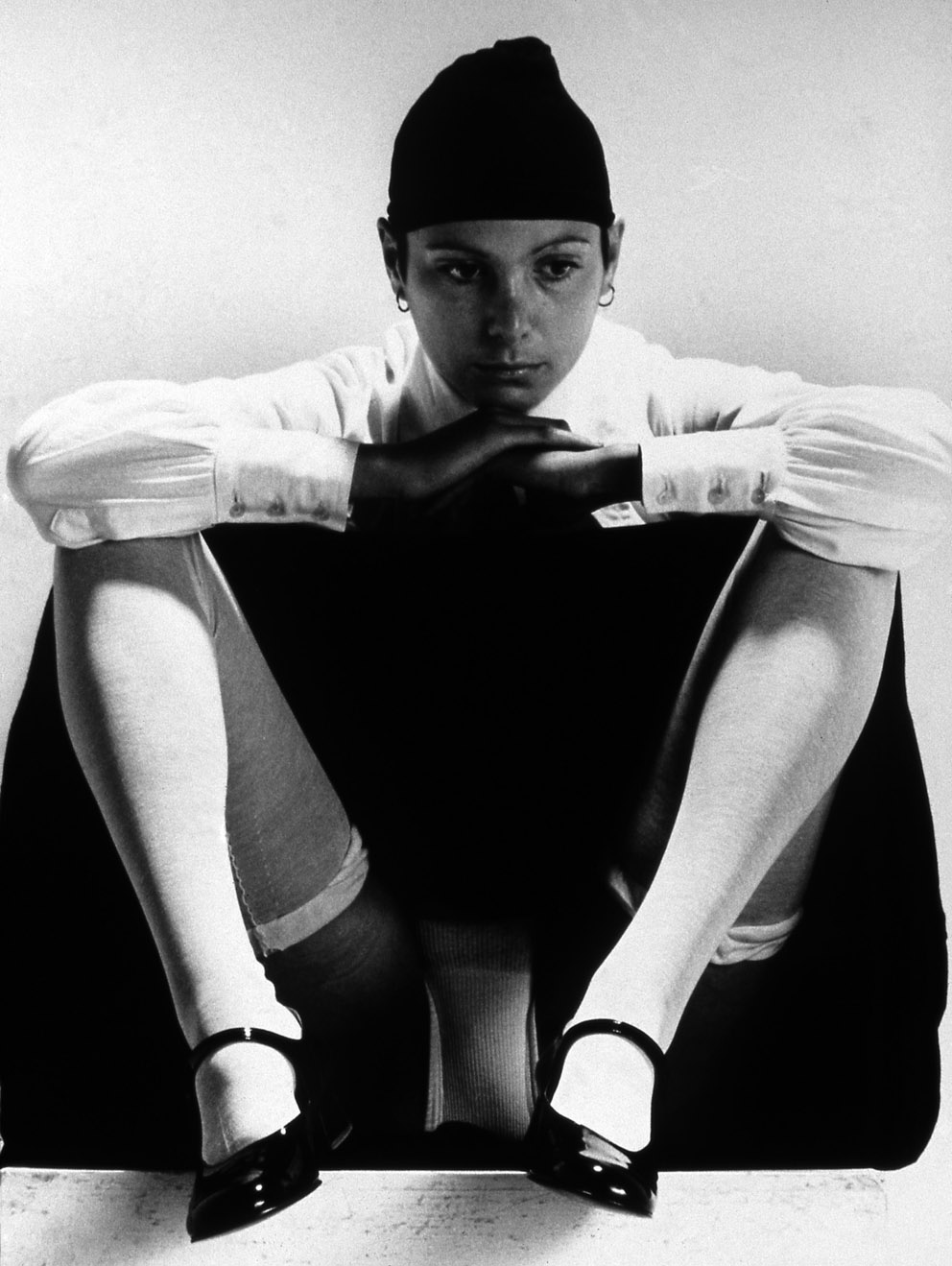
Fabio Mauri, Ideologia e Natura, 1973. Photo: Elisabetta Catalano su tela / on canvas. Courtesy: Studio Fabio Mauri.
In Vice versa there are places evoked only by their odors. The walls of the city are pierced by small holes, through which comes the scent of distant landscapes. Every day the inhabitants line up and wait their turn, in the hope of finding again — by their smell — the places of their childhood. Here there are no bells or clocks: the passing of time is marked by a drop of water that falls at regular intervals onto an enormous iron plate. The calendar is fixed by measuring the diameter of the ring of rust that forms on the sheet of metal; when the entire surface of the iron turns red, an era comes to an end and a new one begins.
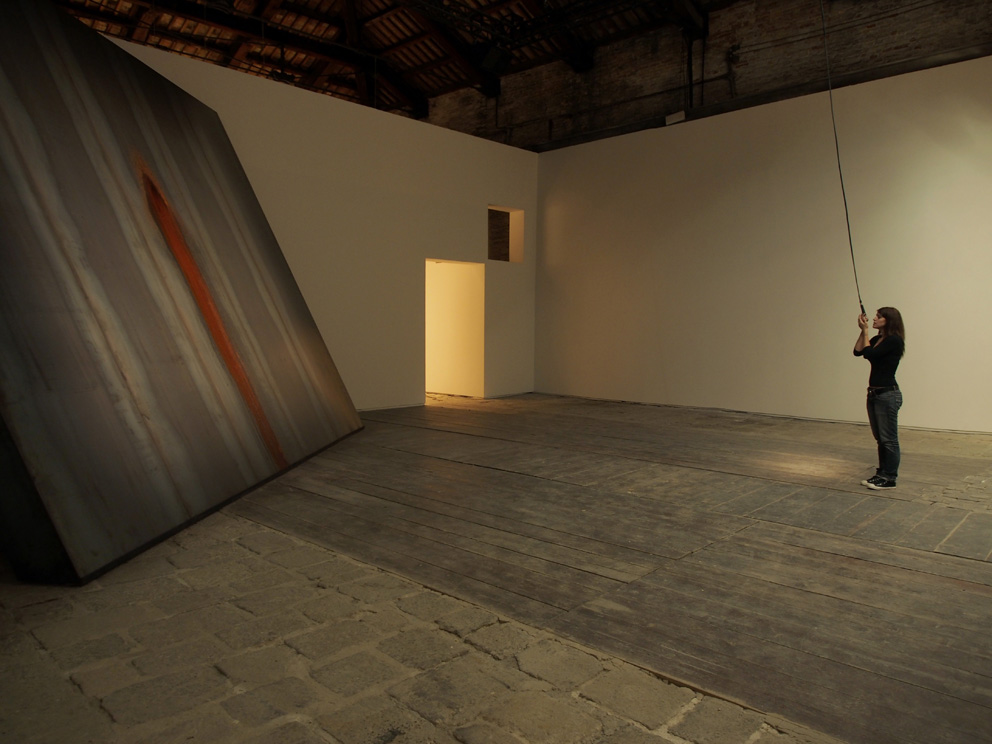
Francesca Grilli, Fe2O3, Ossido ferrico, 2013. Courtesy Francesca Grilli. Photo: Alessandro Sala
The inhabitants of Vice versa worship a formless and nameless god. They are in the habit of carrying out propitiatory rituals, in which the whole community takes part. One of them takes place around a massive block of marble, on top of which four young men raise and lower pieces of cloth in synchrony. At the base of the mass there is a row of peculiar sculptures carved from rough wood — a field of attraction for supernatural forces. A little further on, the paving of a city square is occupied by 10 000 clay bricks stamped with incomprehensible alphanumeric codes — some believe that they make up a secret language that will provide access to a hidden treasure, while others think they constitute an archive of the space junk still in orbit around the Earth.
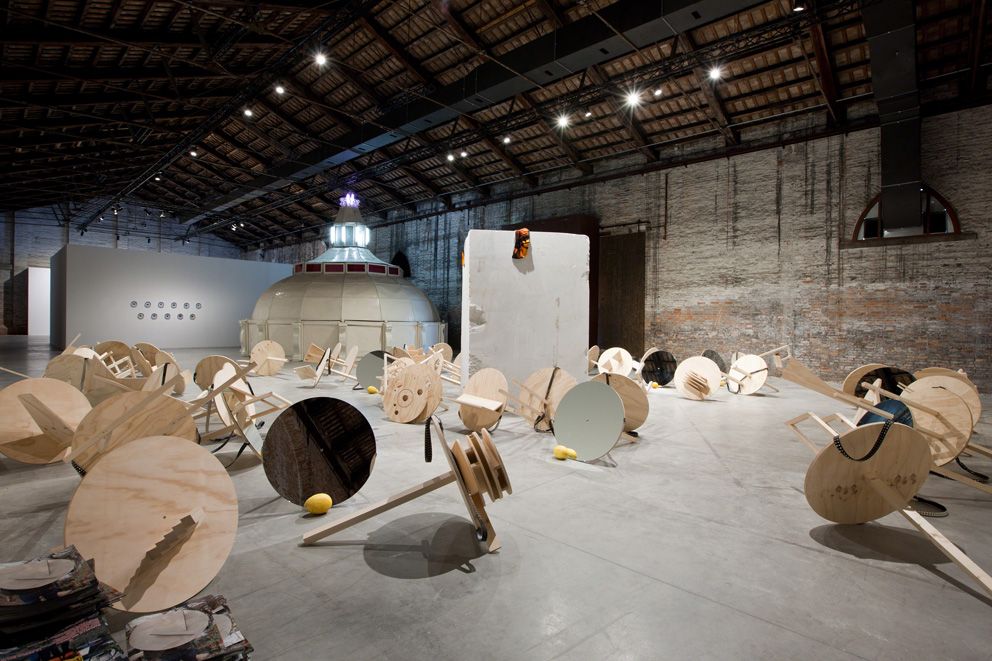
Marcello Maloberti, La voglia matta e/and Bolide #1, #2, #3… #55, 2013. Courtesy Marcello Maloberti e/and Galleria Raffaella Cortese. Photo: Laura Einaudi
In Vice versa, finally, many of the commercial activities are conducted on trees. The city is known all over the world for its hanging hairdressers: the women of Vice Versa are used to clambering up on the branches to have their long dark tresses cut perfectly. Next to every tree is set a concrete cube covered with gold dust: each inhabitant of the city is allowed to take part of it. I wonder what will happen to Vice Versa once the gold runs out. But no one, for the moment, seems to be worried about it.”
Vice versa, the exhibition staged in the Italian Pavilion at the 55th Venice Biennale of Contemporary Art, is curated by Bartolomeo Pietromarchi.
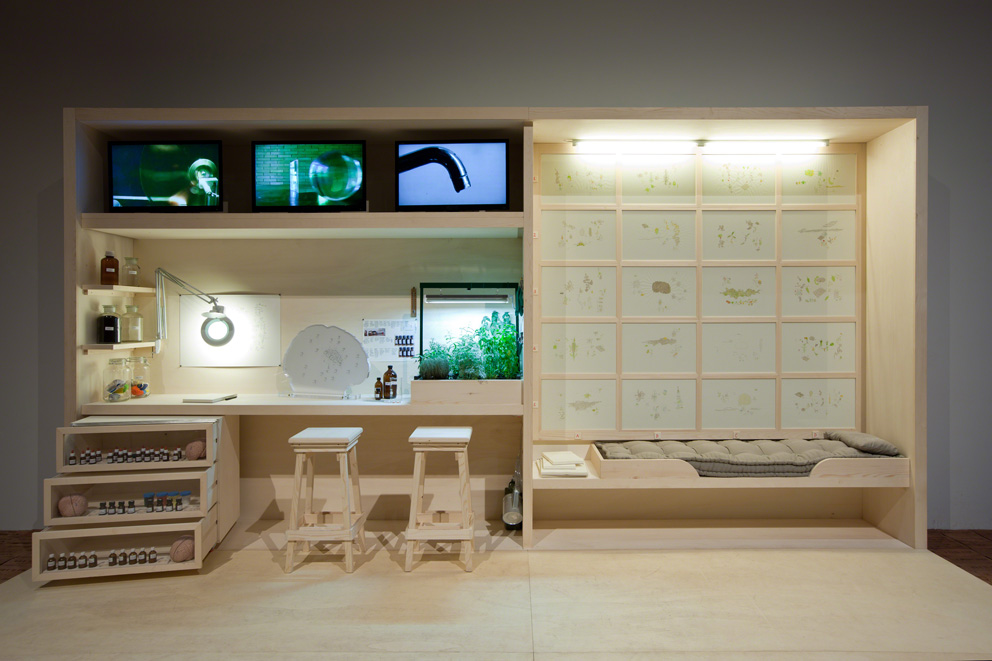
Gianfranco Baruchello, Piccolo sistema, 2012 – 2013. Produced by 2C Arte di Enrico Cantagalli.
Photo: Agostino Osio.
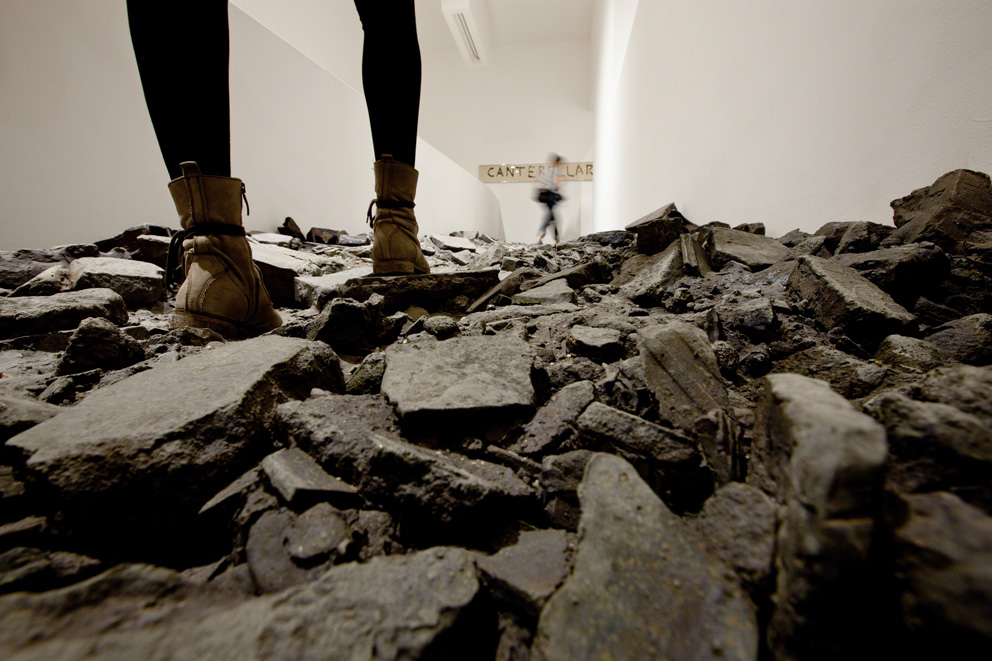
Massimo Bartolini, Due, 2013. Five works of Giuseppe Chiari: Ascoltare; Cammininare; Canterellare; Fantasticare; Pianoter, 1974. Courtesy Massimo Bartolini, Galleria Massimo De Carlo, Milan-London, Frith Street Gallery, London e/and Magazzino. Photo: Agostino Osio.
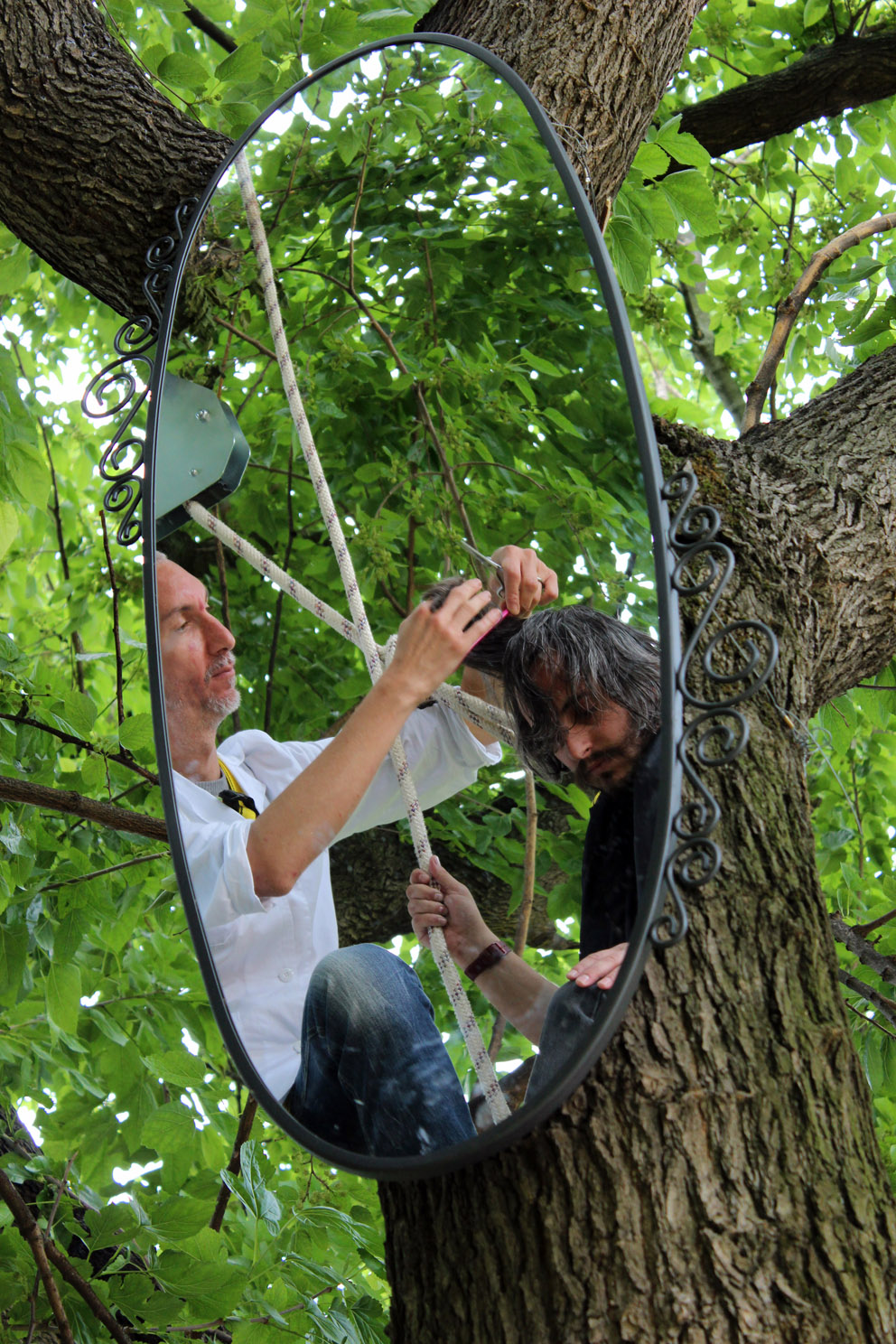
Sislej Xhafa, Parallel Paradox , 2013. Courtesy GALLERIA CONTINUA, San Gimignano / Beijing / Le Moulin. Photo: Angela Zuin
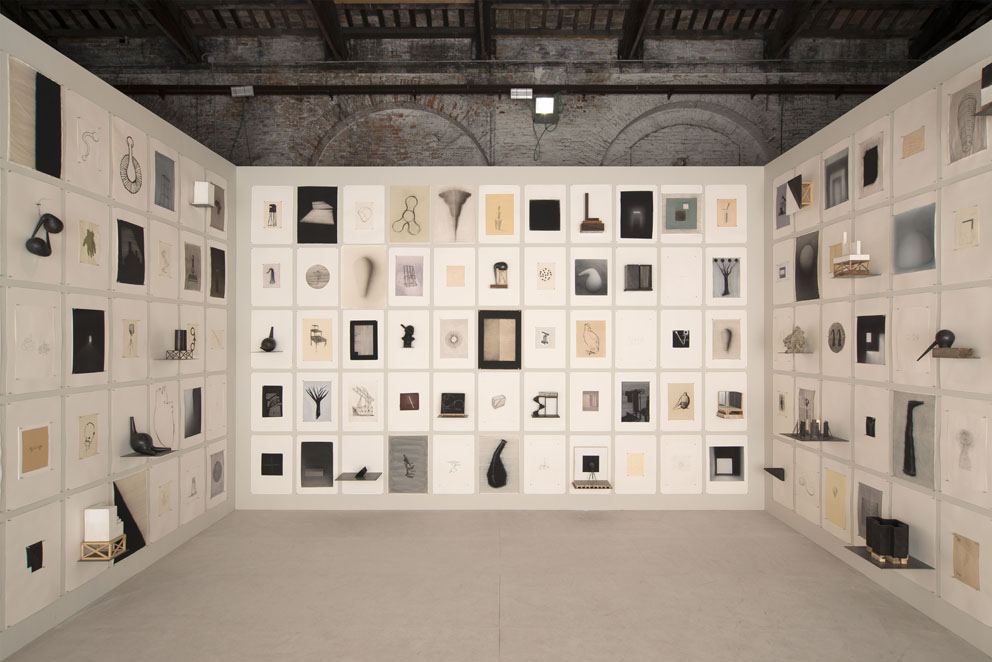
Marco Tirelli, Senza titolo, 2013. Courtesy Marco Tirelli e/and Giacomo Guidi Arte Contemporanea. Photo: Giorgio Benni.
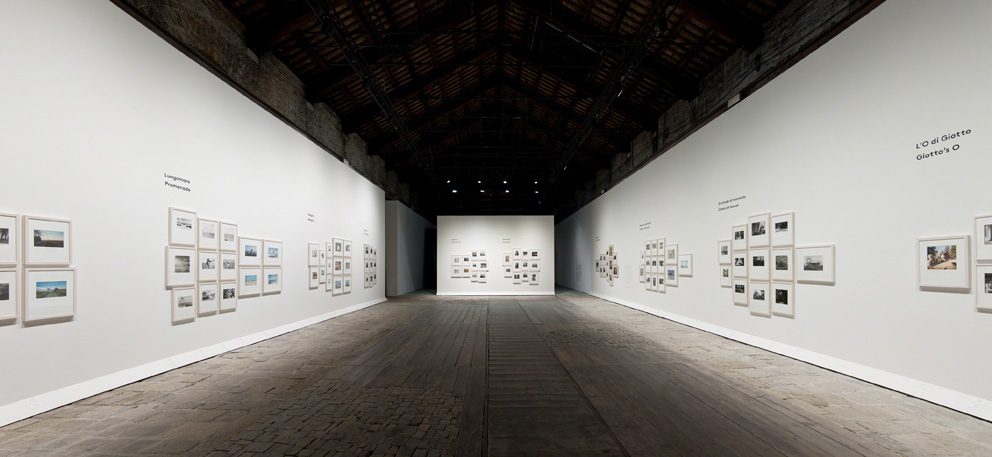
Luigi Ghirri | Luca Vitone, veduta-luogo | view-place.
Padiglione Italia, 55. Esposizione Internazionale d’Arte della Biennale di Venezia. Photo: Agostino Osio.
Follow Federico Florian on Google+, Facebook, Twitter.
Dello stesso autore / By the same author: ArtSlant Special Edition – Venice Biennale
Notes on ‘The Encyclopedic Palace’. A Venetian tour through the Biennale
The national pavilions. An artistic dérive from the material to the immaterial
The National Pavilions, Part II: Politics vs. Imagination
The Biennale collateral events: a few remarks around the stones of Venice